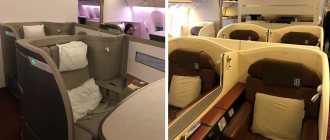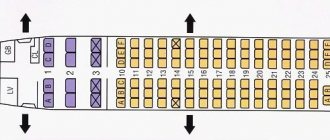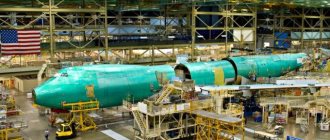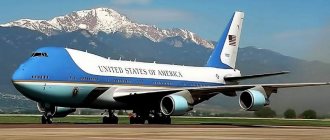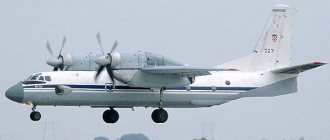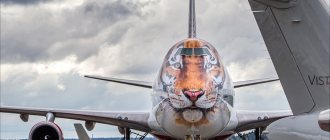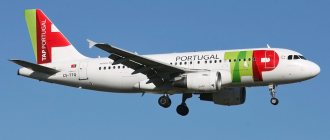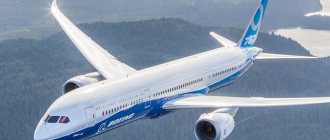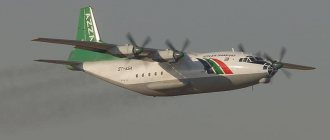This article is about the airliner originally developed in the 1990s by McDonnell Douglas as the MD-95. For the Boeing Model 717 military transport developed in the 1950s, see C-135 Stratolifter. For the earlier airliner temporarily coded Boeing 717, see Boeing 720.
Jet airliner, latest series derived from the DC-9 family
| Boeing 717 | |
| Boeing 717 of Delta Air Lines, its largest operator | |
| Role | Narrow body jet airliner |
| national origin | United States |
| Manufacturer | Boeing commercial aircraft |
| Designer | McDonnell Douglas |
| First flight | September 2, 1998[1][2] |
| Introduction | October 12, 1999 AirTran Airways [2] |
| Status | In service |
| Primary users | Delta Air Lines Hawaiian Airlines QantasLink AirTran Airways (historic) |
| Produced | 1998–2006 [2] |
| Number of built | 156 [3] |
| Developed from | McDonnell Douglas DC-9 |
Boeing 717
is a twin-engine, narrow-body jet passenger aircraft designed for the 100-seat market.
The airliner was developed and initially marketed by McDonnell Douglas as the MD-95
, a derivative of the DC-9 family. The Boeing 717 can seat up to 134 passengers and has an estimated range of 2,060 nautical miles (3,820 km). It is powered by two Rolls-Royce BR715 turbofan engines mounted in the rear fuselage.
The first order was placed in October 1995 by ValuJet Airlines (later AirTran Airways); McDonnell Douglas and Boeing merged in 1997 before production began. The airliner entered service in 1999 as the Boeing 717
. Production ceased in May 2006 after 156 vehicles had been built. As of July 2022, there were 148 Boeing 717 aircraft in service [Update].
Content
- 1 Development 1.1 Background
- 1.2 MD-95
- 1.3 Engines
- 1.4 Production site
- 1.5 Rebranding and marketing
- 1.6 Assembly line and end of production
- 1.7 Main stages of the program
Development[edit]
The 717 retains the five-seat design of the DC-9.
Background [edit]
Douglas Aircraft launched the DC-9, a short-range companion to their larger four-engined DC-8 in 1963. [4] The DC-9 was an entirely new design, using two rear fuselage-mounted Pratt & Whitney JT8D turbofan engines; small efficient wing; and T-tail. [5] The DC-9 first flew in 1965 and entered airline service later that year. [6] When production ended in 1982, a total of 976 DC-9s had been produced. [5]
The McDonnell Douglas MD-80 series, the second generation of DC-9 aircraft, began airline service in 1980. It was a stretched DC-9-50 with a higher maximum take-off weight (MTOW) and a larger fuel capacity. like the new generation Pratt and Whitney JT8D-200 series engines and improved wing design. [7] From 1980 to 1999, 1,191 MD-80s were delivered. [8]
The MD-90 was developed from the MD-80 series. [9] It was launched in 1989 and first flew in 1993. [10] The MD-90 was longer, had a glass cockpit (electronic instruments) and more powerful, quieter and more fuel-efficient IAE V2525-D5 engines with an option to upgrade to the IAE V2528 engine. [11] A total of 116 MD-90 airliners were delivered. [8]
MD-95[edit]
The history of the MD-95 dates back to 1983, when McDonnell Douglas described a study called DC-9-90
. In the early 1980s, as production of the DC-9 family shifted from the smaller Series 30 to the larger Super 80 (later renamed MD-80), McDonnell Douglas proposed a smaller version of the DC-9 to fill the remaining gap. from DC-9-30. Dubbed the DC-9-90, it was revealed in February 1983 and was intended to be approximately 25 ft 4 in (7.72 m) shorter than the DC-9-81, resulting in an overall length of 122 ft 6 in ( 37.34 m). . The aircraft was offered with the 17,000 lbf (76 kN) thrust JT8D-200 series engine, although the CFM International CFM56-3 was also considered. Carrying up to 117 passengers, the DC-9-90 was to be fitted with a DC-9 wing with a 2 ft (0.61 m) tip extension rather than the more heavily modified increased area of the MD-80. The aircraft had an estimated range of 1,430 miles (2,648 km), extendable to 2,060 miles (3,815 km), and a gross weight of 112,000 pounds (51,000 kg). [12]
The DC-9-90 aircraft was designed to meet the needs of the recently canceled American aviation industry. However, its development was delayed due to the recession of the early 1980s. When McDonnell Douglas did develop a smaller version of the MD-80, it simply made the aircraft smaller to create the MD-87, rather than offering a lighter, lighter aircraft more comparable to the DC-9-30. With its relatively high take-off weight and powerful engines, the MD-87 essentially became a special-purpose aircraft and could not compete with all the new 100-seat aircraft that were being developed at that time. While the MD-87 was an excellent aircraft for specialized roles, it often did not sell on its own. Given the commonality factor, sales were largely limited to existing MD-80 operators. [13]
In 1991, McDonnell Douglas announced that it was again considering developing a dedicated 100-seat version of the MD-80, originally called MD-87-105
(105 places).
It was intended to be approximately 8 ft (2.4 m) shorter than the MD-87, powered by engines rated 16,000–17,000 lbf (71–76 kN) thrust. [13] McDonnell Douglas, Pratt & Whitney and the China National Aviation Technology Import and Export Agency signed a memorandum of understanding to develop a 105-seat version of the MD-80. At the 1991 Paris Air Show, McDonnell Douglas announced the development of a 105-seat aircraft, designated MD-95
. [13] The new name was chosen to reflect the expected year of delivery. [14]McDonnell Douglas first proposed the MD-95 in 1994. [14] [15]
In early 1994, the MD-95 reappeared as a similar aircraft to the DC-9-30, with nearly identical weight, dimensions, and fuel capacity. Major changes included "compressing" the fuselage to a length of 119 ft 4 in (36.37 m) (the same as the DC-9-30) and returning the DC-9's original wingspan of 93 ft 5 in (28.47 m) ). At this time, McDonnell Douglas said it expected the MD-95 to become a family of aircraft with the ability to increase range and capacity. [13] The MD-95 was designed to fill a market need to replace the early DC-9s, which were approximately 30 years old at the time. The MD-95 underwent a major overhaul, returning to the original DC-9-30 design and incorporating new engines, cockpit, and other more modern systems. [14]
In March 1995, longtime McDonnell Douglas customer Scandinavian Airlines System (SAS) selected the Boeing 737-600 as its 100-seat aircraft over the MD-95. [14] In October 1995, US newcomer and low-cost carrier ValuJet signed an order for 50 MD-95 aircraft plus 50 options. [14] McDonnell Douglas President Harry Stonesifer believed that there was no risk in starting production of the MD-95 based on this single order, since further orders would "take more time." [16] The ValuJet order was the only order received in the last two years. [15]
Engines[edit]
The first proposal called for the MD-95 to be powered by a 16,500 lbf (73 kN) thrust JT8D-200 series engine, with the Rolls-Royce Tay 670 also considered as an alternative. This was confirmed in January 1992 when Rolls-Royce and McDonnell Douglas signed a memorandum of understanding for the Tay-powered MD-95. McDonnell Douglas said the MD-95 project would cost only a minimal amount to develop because it is a direct offshoot of the IAE-powered MD-90. [13]
During 1993, McDonnell Douglas appeared to be supporting a DC-9-30 life extension program called DC-9X to continue its presence in the 100-120 seat market rather than concentrating on the new MD-95 build. . In its assessment of engine upgrades available for the DC-9X, McDonnell Douglas found the BMW Rolls-Royce BR700 engine to be an ideal candidate, and on 23 February 1994, the BR700 was selected as the sole powerplant for the airliner. [13]
Production site[edit]
The Boeing 717 was assembled at the company's plant at Long Beach Airport, California; spare parts came from all over the world.
McDonnell Douglas planned to have final assembly of the MD-95 in China, as an offshoot of the Trunkliner program, for which McDonnell Douglas was negotiating to build up to 150 MD-90s in China. The MD-90 Trunkliner deal was completed in June 1992, but the contract was for 40 aircraft, including 20 MD-80T and 20 -90T. The MD-80 has been manufactured under license in Shanghai since the 1980s. However, in early 1993, MDC said it was considering sites outside of China and later sought alternative sites for the assembly line. In 1994, McDonnell Douglas sought partners around the world to share development costs. He also began searching for an inexpensive site for final assembly. The Halla Group from South Korea was chosen to manufacture the wings; Alenia of Italy entire fuselage; Taiwan Aerospace Development Corporation, tail; ShinMaywa from Japan, horizontal stabilizer; and Korean Air Lines manufacturing division, nose and cockpit.[13]
On November 8, 1994, McDonnell Douglas announced that final assembly would be removed from Douglas' longtime plant at Long Beach Airport, California. Instead, the Dalfort Aviation modification and maintenance facility in Dallas, Texas was selected to build the MD-95. In early 1995, Long Beach management and unions reached an agreement to reduce wage costs for the life of the MD-95 program, and McDonnell Douglas rescinded the tentative agreement with Dalforth. [17]
Rebranding and marketing[edit]
After McDonnell Douglas was acquired by Boeing in August 1997,[18][19] most observers expected Boeing to cancel development of the MD-95. However, Boeing decided to continue development under a new name, Boeing 717. [20] Although Boeing appeared to have skipped the 717 model designation when the 720 and 727 followed the 707, the 717 name was the company's model number. for military transport aircraft C-135 Stratolifter and KC-135 Stratotanker tanker aircraft. The 717 was also used to promote the early 720 design within airlines before it was modified to meet market demands. A Boeing historian notes that the Air Force tanker was designated "717-100" and the commercial airliner was designated "717-200." [21] The lack of widespread use of the 717 name left it open to rebranding as the MD-95.
The first 717 was delivered to AirTran Airways in September 1999, and the last in May 2006.
Boeing initially had no more success selling the 717 than McDonnell Douglas. Even the initial order for 50 aircraft was not guaranteed in the chaotic post-deregulation United States air travel market. Assembly of the first 717 began in May 1997. [22] The aircraft's roll-out ceremony took place on June 10, 1998. The 717's first flight took place on September 2, 1998. After flight testing, the airliner received a type certificate on September 1, 1999. Its first delivery took place in September 1999 to AirTran Airways, formerly Valujet. Commercial service began the following month. [1] [2] [23] Trans World Airlines (TWA) ordered 50 717s in 1998, with an option for an additional 50 aircraft. [24]
Boeing's decision to produce the 717 gradually paid off. At the beginning of 717 the operators were delighted[ edit]
] with the appeal of reliability and passenger type and decided to order more. A small Australian regional airline, Impulse, took on five 717 aircraft on long-term leases in early 2000 [25] to begin expansion onto major routes. [26] This ambitious move could not be sustained in the face of competition from major companies, and Impulse was sold to Qantas in May 2001. [27]
Hawaiian Airlines operates a very short-haul inter-island network.
Within months, Qantas realized the 717's capabilities: it is faster than the BAe 146, and offers higher dispatch reliability, over 99%, than competing aircraft. [ Citation needed
] Maintenance costs are low: a maintenance inspection, for example, takes three days and is required every 4,500 flight hours, according to AirTran Airways.
[ citation needed
] (By comparison, its predecessor the DC-9 took 21 days to test C.) The new Rolls-Royce BR715 engine is relatively easy to maintain. Many 717 operators such as Qantas have switched to the aircraft; Qantas purchased another 717 to replace its fleet of BAe 146s, [28] and other orders came from Hawaiian Airlines and Midwest Airlines. [29]
Boeing actively marketed the 717 to a number of major airlines, including Northwest Airlines, which already operated a large fleet of DC-9s, and Lufthansa. Boeing also studied a stretched, higher-capacity version of the 717 called the 717-300, but decided not to pursue development of the new model for fear it would encroach on the company's 737-700. Production of the original 717 continued. Boeing continued to believe that the 100-passenger market would be profitable enough to support both the 717 and the 737-600, the smallest of the Next-Generation 737 series. Although the aircraft were similar in size, the 737-600 was better suited for long-haul routes, while the lighter 717 was more efficient on shorter regional routes. [30][31]
Assembly line and end of production[edit]
In 2001, Boeing began implementing the moving assembly line to produce the 717 and 737 aircraft. [32] The moving line significantly reduced production time, resulting in lower production costs. [20] [33] Following a decline in air travel caused by the economic downturn following the terrorist attacks of September 11, 2001, Boeing announced it was reviewing the type's future. After much deliberation, it was decided to continue production. Despite the lack of orders, Boeing was confident in the 717's fundamental suitability for the 100-seat market and that this market would be large in the long term. [34] After 19 717 sales worldwide in 2000 and just 6 in 2001, Boeing received 32 orders for the 717 in 2002, despite a severe industry downturn. [8] The 100th Boeing 717 was delivered to AirTran Airways on June 18, 2002. [35] [36] [37]
Increased competition from regional jets produced by Bombardier and Embraer severely impacted sales during the post-2001 airline downturn. American Airlines acquired TWA and initially planned to continue the 717 order. American Airlines canceled TWA's order for the Airbus A318, but eventually also canceled Boeing 717s that had not yet been delivered. [38] The beginning of the end came in December 2003 when Boeing failed to reach a US$27 billion contract from Air Canada, a long-term DC-9 customer that chose Embraer E-Jets and Bombardier CRJ200s over the 717. [39] In January 2005, Citing weak sales, Boeing announced that it plans to cease production of the 717 once all backlog orders are fulfilled. [40]
The 156th and final 717 rolled off the production line in April 2006 for AirTran Airways, which was both the 717's launch and final customer. The last two Boeing 717s were delivered to AirTran Airways and Midwest Airlines customers on May 23, 2006. [2][3] The 717 was the last commercial aircraft produced at Boeing's Long Beach plant in Southern California. [3]
Main stages of the program [edit]
- Announced: June 16, 1991 at the Paris Air Show as MD-95 in the McDonnell Douglas program [41]
- Proposal Approval: On July 22, 1994, McDonnell Douglas received board approval to propose the aircraft. [13] [42]
- First order: October 10, 1995 from ValuJet (later AirTran Airways) for 50 aircraft and 50 MD-95 aircraft options [2] [42]
- Deployment: June 10, 1998 in Long Beach, California [2] [43]
- First flight: September 2, 1998 [1] [2]
- Certification: FAA: September 1, 1999; [44] EASA (JAA): 16 September 1999 [45]
- Entered service: October 12, 1999 by AirTran Airways on the Atlanta-Washington, D.C. (Dulles) route [2] [23]
- Last delivery: May 23, 2006 to AirTran Airways. [2] [46]
An excerpt characterizing the Boeing 717
- What does he need the leftovers for? - said Karataev. “They would have given us some important little extras.” Well, God bless him. - And Karataev, with a suddenly changed, sad face, took out a bundle of scraps from his bosom and, without looking at it, handed it to the Frenchman. - Ehma! - Karataev said and went back. The Frenchman looked at the canvas, thought about it, looked questioningly at Pierre, and as if Pierre’s gaze told him something. “Platoche, dites donc, Platoche,” suddenly blushing, the Frenchman shouted in a squeaky voice. – Gardez pour vous, [Platosh, and Platosh. Take it for yourself.] - he said, handing over the scraps, turned and left. “Here you go,” Karataev said, shaking his head. - They say that they are not Christ, but they also have a soul. The old men used to say: a sweaty hand is a bit too hard, a dry hand is stubborn. He himself is naked, but he gave it away. – Karataev, smiling thoughtfully and looking at the scraps, was silent for some time. “And the important ones, my friend, will be blown out,” he said and returned to the booth. Four weeks have passed since Pierre was captured. Despite the fact that the French offered to transfer him from a soldier's booth to an officer's booth, he remained in the booth he entered from the first day. In devastated and burned Moscow, Pierre experienced almost the extreme limits of hardship that a person can endure; but, thanks to his strong constitution and health, which he had not been aware of until now, and especially due to the fact that these hardships approached so imperceptibly that it was impossible to say when they began, he endured his situation not only easily, but also joyfully . And it was at this very time that he received that peace and self-satisfaction for which he had vainly strived before. For a long time in his life he was looking from different sides for this peace, agreement with himself, for what struck him so much in the soldiers at the Battle of Borodino - he looked for this in philanthropy, in Freemasonry, in the dispersion of social life, in wine, in heroic deeds self-sacrifice, in romantic love for Natasha; he sought this through thought, and all these searches and attempts all deceived him. And he, without thinking about it, received this peace and this agreement with himself only through the horror of death, through deprivation and through what he understood in Karataev. Those terrible minutes that he experienced during the execution seemed to have washed away forever from his imagination and memories the disturbing thoughts and feelings that had previously seemed important to him. Not even a thought came to him about Russia, or the war, or politics, or Napoleon. It was obvious to him that all this did not concern him, that he was not called and therefore could not judge all this. “No time for Russia, no union,” he repeated Karataev’s words, and these words strangely reassured him. His intention to kill Napoleon and his calculations about the cabalistic number and the beast of the Apocalypse now seemed incomprehensible and even ridiculous to him. His anger against his wife and anxiety about not disgracing his name now seemed to him not only insignificant, but funny. What did he care about the fact that this woman was leading the life she liked somewhere out there? Who, especially him, cared whether they found out or didn’t find out that the name of their prisoner was Count Bezukhov? Now he often recalled his conversation with Prince Andrei and completely agreed with him, only understanding Prince Andrei’s thought somewhat differently. Prince Andrei thought and said that happiness can only be negative, but he said this with a tinge of bitterness and irony. As if, by saying this, he was expressing another thought - that all the aspirations for positive happiness invested in us are invested only in order to torment us, not satisfying us. But Pierre, without any second thought, recognized the justice of this. The absence of suffering, the satisfaction of needs and, as a result, the freedom to choose occupations, that is, a way of life, now seemed to Pierre to be the undoubted and highest happiness of a person. Here, now only for the first time, Pierre fully appreciated the pleasure of eating when he was hungry, drinking when he was thirsty, sleeping when he was thirsty, warmth when he was cold, talking with a person when he wanted to talk and listen to a human voice. Satisfaction of needs - good food, cleanliness, freedom - now that he was deprived of all this seemed to Pierre to be perfect happiness, and the choice of occupation, that is, life, now that this choice was so limited, seemed to him such an easy matter that he forgot the fact that an excess of the comforts of life destroys all the happiness of satisfying needs, and the greater freedom to choose occupations, the freedom that education, wealth, position in the world gave him in his life, that this freedom makes the choice of occupations insolublely difficult and destroys the very need and opportunity to study.
Design[edit]
Double cockpit with six displays
The Boeing 717 features a two-seat cockpit that includes six interchangeable LCD displays and advanced Honeywell VIA 2000 computers. The cabin design is called the Advanced Common Flightdeck (ACF) and is shared with the MD-10 and MD-11. Cockpit functions include an electronic instrument system, dual flight control systems, a central fault display system and a global positioning system. Category IIIb automatic landing capabilities are available for poor weather flights and future air navigation systems. The 717 has the same type rating as the DC-9, so the FAA has approved transition courses for DC-9 and analog MD-80 pilots that can be completed in 11 days. [47]
Together with Parker Hannifin, MPC Products of Skokie, Illinois, developed a mechanical control kit with wireless control technology for the 717 flight deck. The modules replace the very bulky equipment found on previous DC-9/MD-80 aircraft. Rolls-Royce BR715 engines are fully controlled by an electronic engine management system (FADEC - Full Authority Digital Engine Control), developed by BAE Systems, which provides improved controllability and optimization. [47] The engine has significantly lower fuel consumption compared to other engines of equivalent thrust. [48]
Like its DC-9/MD-80/MD-90 predecessors, the 717 has a 2+3 seating arrangement in main economy class, providing only one middle row seat, while other narrowbody twin jets such as Boeing The 737 family and Airbus A320 family often have a 3+3 layout with two middle seats in each row. [49] [50] Unlike its predecessors, McDonnell Douglas decided not to offer the MD-95/717 with the flexibility of aft staircase landing, in order to maximize fuel efficiency by reducing and simplifying as much ancillary equipment as possible. [51]
Boeing 747-400 aircraft cabin diagram
Upper deck
Business class – rows 1 – 3. In the business class of the Boeing 747-400 there are only 12 seats.
Economy class – rows 5 – 9. The best economy class seats on a Boeing 747-400 are on row 5.
Lower deck
The tourist class is located on the lower deck.
Rows 10, 11, 12, seats A, B, H, K - these rows have two seats. Flying in such seats as a couple is much more comfortable - you won’t have to experience discomfort and cause inconvenience to your neighbors. In addition, these seats will be convenient for passengers with small children, since there are mounts for baby strollers in the bow of the aircraft.
Rows 17, 18 and 19 seats E and F - two rows of two seats in the center, also extremely comfortable, especially row 17 because There will be no restrictions in front of you and you can stretch your legs very comfortably.
Row 19, seats A, B, C, H, K, L - this row is located next to the emergency exits and most likely will not be very comfortable because the seat backs here may not recline.
Rows 20 - 22, seats D, E, G on a Boeing 747-400 are not the best choice - they are surrounded on both sides by toilets.
Row 29 is also not very good, because... the backs of the seats in these seats do not recline in the side seats due to the location of emergency exits behind them, and the backs of the central seats simply rest against the wall of the toilet.
Row 31 is comfortable due to the large free legroom, but due to the fact that there is not another row of seats in front of you, the tables are located in the armrests. Such tables are often very inconvenient due to their small size and general flimsiness of the structure. There are also several nuances associated with these places, for example, in front of place 31A there may be an emergency evacuation hatch, and in the immediate vicinity of places 31 - 34C there is a staircase to the upper deck.
The backs of seats in rows 43, 54, 70, 71 do not recline due to the emergency exits located behind them.
In rows 44 and 45 you will feel comfortable, there is increased legroom, however, the proximity of these seats to the toilet may cause some discomfort.
Side rows 67 - 70 have 2 seats each - this is convenient for people traveling in pairs.
In the outermost 67-70 rows there are 2 instead of 3 seats. In the last rows, the backrests of the seats may not recline, and do not forget about the proximity to the toilets.
Options [edit]
QantasLink aircraft with boarding staircase
717-200 Production version with two Rolls-Royce BR715A1-30 or BR715C1-30 engines, 134 passenger seats, 155 built. 717 Business Express Proposed enterprise version of the 717-200, unveiled at the EBACE convention in Geneva, Switzerland in May 2003. Configured to seat 40 to 80 passengers in a first and/or business class cabin (typically 60 passengers with 52 in (130 cm) seat pitch. Maximum range in the HGW configuration with auxiliary fuel and 60 passengers was 3,140 nmi ( 5,820 km; 3,610 mi) Version complements the BBJ family. [52] 717-100 (-100X) Proposed 86-seat version, formerly MD-95-20; four frames (6 ft 3 in (1.91 m) ) in short. Renamed 717-100X; wind tunnel testing began early 2000; revised mid-2000 to eight-frame (3.86 m) shrinkage. Launch decision was delayed in December 2000 and then again was delayed to an unknown date. By mid-2003. [30] 717-100X Lite Proposed 75-seat version with Rolls-Royce Deutschland BR710 turbofan engines; later abandoned. [30] 717-300X Proposed stretched version, formerly MD-95- 50; studies show that typical two-class seating for 130 passengers with an overall length increased to 138 ft 4 in (42.16 m) by the addition of nine frames (five front and four rear wings); higher maximum runway and limited space payload; additional service door in the aft wing; and BR715C1-30 21,000 lb (9,500 kg) engines. AirTran has expressed interest in converting some of the -200's options to this model. Under review at the end of 2003 Star Alliance Group (Air Canada, Austrian Airlines, Lufthansa and SAS); Delta, Iberia and Northwest Airlines have indicated interest. [30] [31]
Review of the model with a business class cabin
Boeing 737-800 - photo of the cabin with economy and business cabins.
Based on the cabin diagram of a Boeing 737-800, you can see:
- 1st row A, C, F, D - located immediately behind the cabin partitions. For this reason, there is not enough space here and the view of the wall does not bring much pleasure, although it is comfortable to do business there.
- Rows 1 - 5 belong to business class and are the most comfortable.
Now let's look at the economy class cabin. This part of the aircraft has 154 seats.
Things to note:
- The 6th row is the most comfortable, there is enough free space, and in front there is only a partition separating the cabin from the business class.
- Rows 12 and 13 - Due to the location of emergency exits, you need to remember that there is no possibility of reclining seats.
- Row 13 C, D, E, F - located near the emergency exits, quite comfortable.
- Row 14 is a fairly wide space.
The cabin diagram of the Boeing 7737-800 With Winglets aircraft also shows the following: row 28 - the seats are very uncomfortable. The reason is quite simple: the proximity of toilets, regular noise and movement of passengers. Also, the stewards will reach this row only after they have walked around the entire aircraft. Thus, we can say that the principle of choosing seats can be anything, the main thing is that it ensures comfortable travel.
Operators[edit]
Volotea plane taking off.
Main article: List of Boeing 717 operators
As of January 2022, Delta Air Lines had 104 [53] Boeing 717-200 (65), QantasLink (20) and Hawaiian Airlines (19) aircraft in service, up from 148 aircraft in 2022. [54]
Delta Air Lines is currently the largest 717 operator, flying nearly 60 percent of all aircraft in service, but has not purchased any of the new planes from Boeing. In 2013, Delta began leasing the entire fleet of 88 aircraft formerly owned by AirTran Airways from Southwest Airlines, which had acquired AirTran but wanted to retain its Boeing 737-only fleet rather than take on a different class of aircraft. [55] For Delta, used Boeing 717s and MD-90s allowed them to retire their DC-9s while being cheaper to acquire than buying new aircraft from Airbus or Boeing. Unlike other traditional US carriers, Delta decided that the best path to profitability was a strategy based on using older aircraft, and to support them, Delta created a very extensive MRO (maintenance, repair and overhaul) organization called TechOps. [56]
In 2015, Blue1 announced that it would sell its fleet of 717 aircraft, of which five were owned by Delta Air Lines and four were sold to the type's third-largest operator, Volotea. [57]
In January 2022, Spanish low-cost airline Volotea retired its last of 19 Boeing 717-200 aircraft as the only remaining European operator of the type. [58]
Advantages of the Boeing 747-400 over its predecessors
Production of Boeing 747 aircraft began in 1970. Already the first cars became popular among both airlines and passengers. It was the first wide-body airliner.
The corporation's designers were constantly working to improve the aircraft. It should be noted that the Boeing 747-300 appeared in 1980, which became the largest aircraft at that time designed to transport passengers. But everything positive about him was limited to this. Technical equipment, flight range, production technologies remained at the same level. In addition, the liner was expensive to operate, and besides, this figure gradually increased.
The new Boeing 747-400 has become more advanced. The introduction of electronics made it possible to eliminate the need for a flight engineer. The crew was reduced to two people. Due to the additional fuel tank and fuel-efficient engines, the aircraft's flight range has increased. Passengers have a greater level of comfort. An entertainment system was installed for them.
Specifications [edit]
Comparison of aircraft of the Douglas DC-9, Boeing 717, McDonnell Douglas MD-90 and McDonnell Douglas MD-80
series. Characteristics of the Boeing 717-200 [51]
| Option | Base | High gross weight |
| Flight deck crew [61]: 66 | Two | |
| 2 class seating: 10 | 106 (8J + 98Y @ 36-32 inches, 91-81 cm) | |
| 1st class seats: 11 | 117Y @ 32 inches (81 cm) | |
| Exit limit [61] : 81 | 134 | |
| Load: 7 | 935 ft³ / 26.5 m³ | 730 ft³ / 20.7 m³ |
| Length: 8 | 124 ft 0 in / 37.8 m | |
| Wingspan: 8 | 93 ft 4 in / 28.4 m | |
| Height: 9 | 29 ft 8 in / 9.0 m | |
| Width: 13 | Fuselage: 131.6 in / 334.2 cm, Cabin: 123.8 in / 314.5 cm | |
| Maximum. takeoff: 7 | 110,000 lbs / 49,895 kg | 121,000 lbs / 54,884 kg |
| Empty weight: 7 | 67,500 lbs / 30,617 kg | 68,500 lbs / 31,071 kg |
| Maximum. payload [61] : 66 | 26,500 lbs /12,021 kg | 32,000 lbs /14,515 kg |
| Fuel weight: 7 | 24,609 lbs / 11,163 kg | 29,500 lbs / 13,382 kg |
| Fuel capacity [62] | 3,673 US gallons. / 13.903 l | 4,403 US gallons. / 16.665 l |
| Turbofan engine (2 ×) [61] : 65 | Rolls-Royce BR715-A1-30 | Rolls-Royce BR715-C1-30 |
| Thrust (2 ×) [61] : 65 | 18,920 lb (84.2 kN) | 21,430 lbf (95.3 kN) |
| Ceiling [61] : 67 | 37,000 ft (11,000 m) maximum | |
| Cruise (34,200 ft) [12] | Mach 0.77 (822 km/h; 444 kN) | |
| Range [12] | 1430 miles (2648 km) | 2,060 miles (3,815 km) |
Expert advice on choosing locations
We will give general recommendations on the selection of seats in the aircraft cabin:
It is very important for a traveler to become familiar with the interior layout and model parameters. It wouldn’t hurt to consult with the company’s employees about the chosen location or choose the most optimal one. It is necessary to take into account your own perception of turbulence. In this situation, experts recommend looking for places located closer to the nose of the plane - the shaking will be felt less strongly than at the end of the plane. Avoid areas close to toilets or escape hatches
It should also be understood that it will be impossible to travel in a reclining position on such seats due to safe flight instructions and the design of the aircraft. Seats located close to the utility seats of the aircraft will not allow you to enjoy the silence of the flight. Remember your own preferences when choosing a salon. If you are traveling with a pet, then you need to position yourself close to the aisles of the cabin.
Orders and deliveries [edit]
Orders
| General | 1995 | 1996 | 1997 | 1998 | 1999 | 2000 | 2001 | 2002 | 2003 | 2004 |
| 155 | 42 | 0 | 0 | 41 years old | 0 | 21 years old | 3 | 32 | 8 | 8 |
Delivery
| General | 1997 | 1998 | 1999 | 2000 | 2001 | 2002 | 2003 | 2004 | 2005 | 2006 |
| 155 | 0 | 0 | 12 | 32 | 49 | 20 | 12 | 12 | 13 | 5 |
Sources: Boeing [63] [64].
See also[edit]
- Aviation portal
- USA portal
Related development
- McDonnell Douglas DC-9
- McDonnell Douglas MD-80
- McDonnell Douglas MD-90
Aircraft of comparable role, configuration and era
- Airbus A318
- Avro R.J.
- Boeing 737-600
- Fokker 100
- Embraer 190/195
- Tupolev Tu-134
- Yakovlev Yak-42
Related Lists
- List of jet airliners
Links[edit]
- ^ abc "Boeing: Historical Snapshot: 717/MD-95 Commercial Transport". Boeing.com
. Retrieved June 30, 2015. - ^ abcdefghij "Boeing 717". Boeing commercial aircraft. Archived from the original on May 13, 2011. Retrieved July 4, 2015.
- ^ abc "Boeing Delivers Final 717s; completes commercial production in California" (press release). Boeing. May 23, 2006. Retrieved June 30, 2015.
- Endres, Gunther. McDonnell Douglas DC-9/MD-80 and MD-90
. London: Ian Allan, 1991. ISBN 0-7110-1958-4. - ^ a b Norris, Guy and Mark Wagner. "DC-9: The Twinjet Workhorse." Douglas Jetliners
. MBI Publishing, 1999. ISBN 0-7603-0676-1. - ↑ Air International,
June 1980, p. 293. - "Boeing: MD-80 Background". Boeing. Archived from the original on March 2, 1999. Retrieved July 16, 2015.
- ^ abc "Boeing: Commercial - Orders and Deliveries". Retrieved July 16, 2015.
- Swanborough 1993, p.90.
- "Boeing: Commercial Airplanes - MD-90 Background". Archived from the original on February 16, 2013. Retrieved July 16, 2015.
- "Boeing: Commercial Airplanes - MD-90 Specifications". Archived from the original on March 8, 2013. Retrieved July 16, 2015.
- ^ abc "717-200 Specifications" (PDF). Boeing. July 2002
- ^ abcdefgh Airclaims Jet Programs 1995
- ^ abcde Norris, Guy; Wagner, Mark (1999). Douglas Jetliners
. MBI Publishing. ISBN 0-7603-0676-1. - ^ ab Becher, Thomas. Douglas Twinjets, DC-9, MD-80, MD-90 and Boeing 717
. The Crowood Press, 2002. ISBN 1-86126-446-1. pp. 106-107. - ↑
Lopez, Ramon and Guy Norris. "MD-95 launched from ValuJet". Flight International, October 25–31, 1995 - "Business and Technology - Parallels in Manufacturing: 7E7 and 717 - Seattle Times". nwsource.com
. - https://www.nytimes.com/1996/12/16/news/16iht-merge.t_0.html Retrieved August 8, 2016.
- "Boeing: history - higher, faster, further - The Boeing Company... Merger of giants". Archived from the original on January 24, 2008. Retrieved July 3, 2015.
- ^ ab "They're coming - but far from gone, 717 innovations live long after production." Boeing Frontiers Magazine, October 2005,
- "Aerospace Notebook: Orphan 717 is not out of order". seattlepi.com, December 22, 2004
- ↑
Flight International Commercial Aircraft Page 45 (September 3, 1997) - ^ ab "Boeing 717 Operational Report". International flight
: 42–48. June 5-11, 2001. Retrieved July 4, 2015. - "TWA to continue fleet renewal with Boeing 717-200".
- ↑
Boeing (April 11, 2000). "Impulse Airlines becomes Australia's first 717" (press release). Retrieved July 8, 2015. - ↑
Boeing (9 January 2001). "Kakadu Impulse Airlines Boeing 717-200 takes off home" (press release). Retrieved July 8, 2015. - ↑
Gaylord, Becky (May 2, 2011).
"Qantas gobbles up rivals as fare war takes a toll". New York Times
. Retrieved July 1, 2015. - ↑
Qantas Corporate Communication (29 October 2004). "QantasLink to replace BAe146 with Boeing 717" (press release). Sydney. Retrieved July 7, 2015. - ↑
Lamb, Warren (28 May 2002). "Boeing 717: Designed with Airline Profitability in Mind" (press release). Retrieved June 30, 2015. - ^ abcd Jane's All World Aircraft 2005
- ^ ab "Boeing Releases Proposed 717-300X Rendering" (press release). September 18, 2003. Retrieved July 7, 2015.
- ↑
Boeing 2001 Annual Report Archived September 23, 2015, at the Wayback Machine. - "Boeing 717 to hit 100th delivery". Aero News Network
. June 12, 2002. Retrieved July 9, 2015. - "Boeing Committed to 717 Program and 100-Seat Market". Boeing
. Archived from the original on February 17, 2002. Retrieved July 11, 2015. - ↑
The Boeing Company (June 18, 2002). “Boeing unveiled its 100th 717-200 Twinjet at the ceremony” (press release). Long Beach, CA: PR Newswire. Retrieved July 9, 2015. - "Boeing Delivers 100th 717-200". Wichita Business Journal
. June 18, 2002. Retrieved July 11, 2015. - "Boeing Delivers 100th 717-200 Twinjet at Ceremony" (press release). June 18, 2002. Retrieved July 9, 2015.
- https://www.flightrun.com/boeing-717/231-twa-trans-world-airlines Accessed August 8, 2016.
- "Air Canada buys 90 planes from Bombardier, Embraer". CBC News
. CBC. December 19, 2003. Retrieved June 30, 2015. - “Boeing Recognizes Charges for Costs of USAF 767 Tankers and 717 Production Completion” (Press Release). Boeing. January 15, 2005. Retrieved July 3, 2015.
- "MDC Enters 100-Seat Arena with MD-95." Flight International - Report on the 1991 Paris Exhibition, 26 June 1991, p. 13.
- ^ ab "A Classic Takes Shape". International flight
. April 1, 1998. P. 31+. - ↑
Boeing (June 10, 1998). "Boeing Launches First 717-200 Passenger Jet" (press release). Retrieved July 3, 2015. - FAA A6WE Type Certificate Data Tables
- EASA Type Certificate Data Tables IM.A.211
- Boeing delivers last 717 to AirTran, ending Douglas era
- ^ab Rogers, Ron (March 2000). "Flight on the B-717-200". Air Line Pilot
: 26. Archived from the original on December 15, 2007. - "BMW Rolls-Royce Powerplant for the Boeing 717". boeing.com
. Boeing. Retrieved December 20, 2016. - "717-200 Interior seating arrangement". Archived from the original on November 22, 2001. Retrieved July 13, 2015.
- "Enhanced 717-200 Passenger Seat Comfort" (PDF). Boeing
. Archived from the original (PDF) on November 22, 2001. Retrieved July 13, 2015. - ^ ab "717-200 Aircraft Performance for Airport Planning". Boeing, May 2011. Accessed July 3, 2015.
- "Boeing Unveils 717 Business Express at EBACE 2003". Boeing, May 7, 2003.
- planespotters.net - Boeing 717 Operators Retrieved January 13, 2021
- "World Airline Census 2018". flightglobal.com
. Retrieved August 21, 2022. - "Delta to add Boeing 717s to its fleet". frequencybusinesstraveler.com
. - [1]
- "Blue Finland to relieve B717 fleet at Volotea, Delta". h-aviation
. - Macca, Marco (11 January 2021). "Volotea: the end of the Boeing 717 in Europe". Airways Magazine
. Retrieved January 11, 2022. - ^ ab "List of Boeing 717 types". Aviation-Safety.net, June 11, 2018
- ^ ab "Boeing 717 Type Index". Aviation-Safety.net, March 4, 2016
- ^ abcdef "Type certificate certificate No. A6WE" (PDF). FAA. March 25, 2014
- "717-200 Aircraft Performance for Airport Planning" (PDF).
- 717 Orders and deliveries. Boeing
- Orders and deliveries (search) Boeing
History of creation
The aircraft was originally called the Me Donell Douglas MO-95 and was produced in 1995. Subsequently, in 1997, after the merger of Me Donell Douglas with the Boeing company, it was renamed Boeing 717.
The airliner was put into operation in October 1999 and has established itself as one of the best lightweight aircraft in the Boeing line.
In total, over the history of the company, 156 products of version 717 were released. Production was stopped on May 23, 2006.
